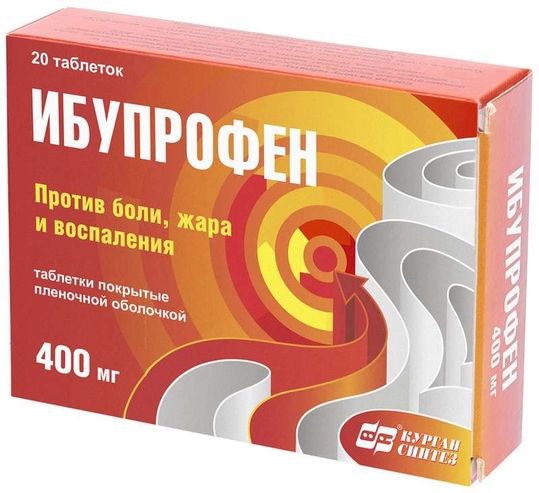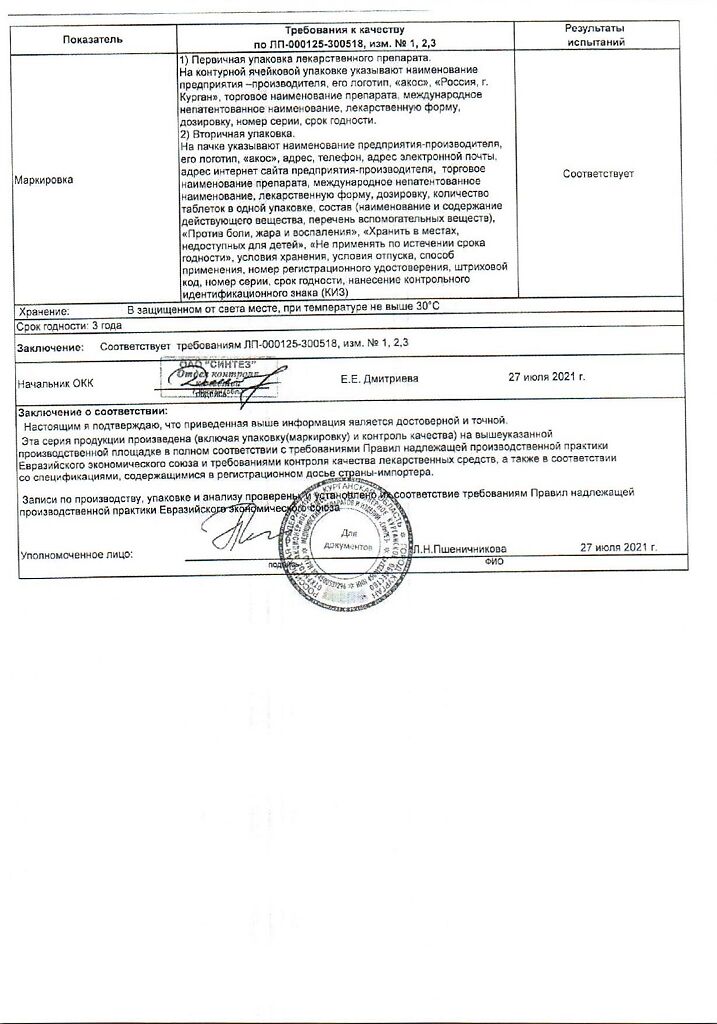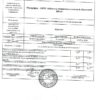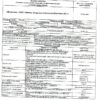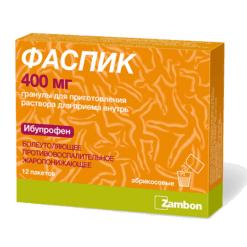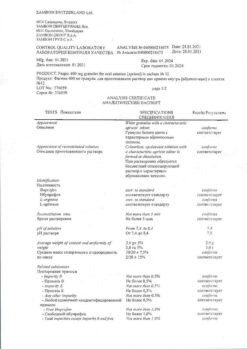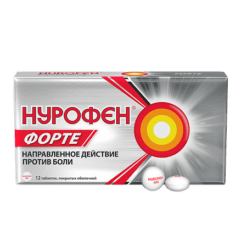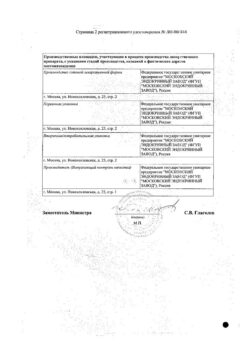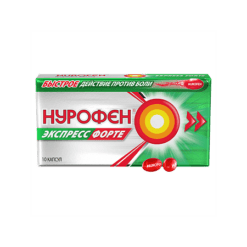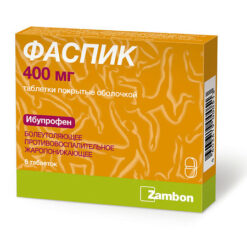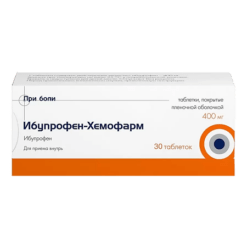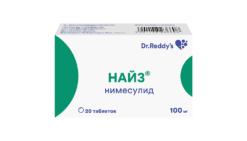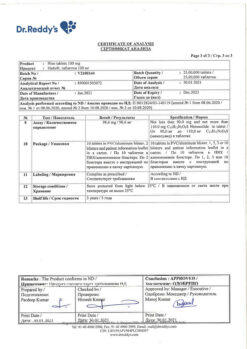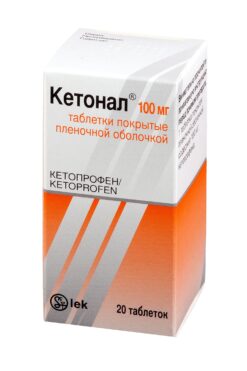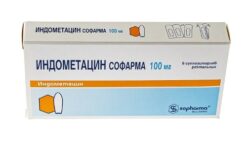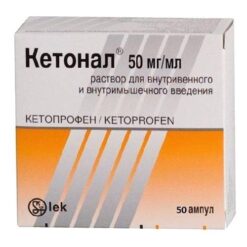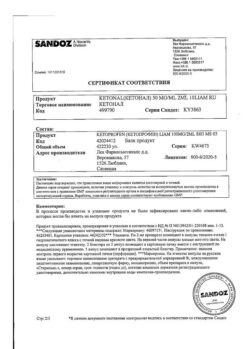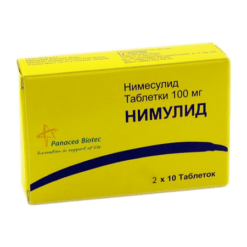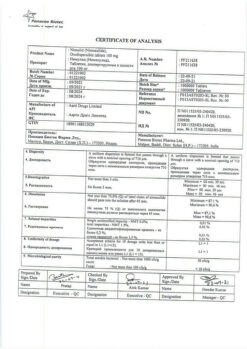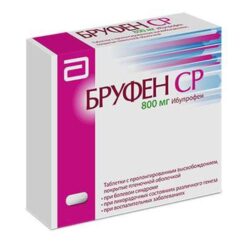No products in the cart.
Ibuprofen, 400 mg 20 pcs
€2.16 €1.96
Description
The drug belongs to the non-steroidal anti-inflammatory drugs, a derivative of phenylpropionic acid. It has analgesic, anti-inflammatory and antipyretic effects.
The effect of the agent is due to inhibition of prostaglandin synthesis by blocking the enzyme cyclooxygenase.
Inhibits platelet aggregation. With prolonged use it has a desensitizing effect.
Indications
Indications
Neuralgia, myalgia, tendinitis, bursitis, tendovaginitis, neuralgic amyotrophy, sprain of the ligamentous apparatus, hematomas, radiculitis, traumatic inflammation of soft tissues and the musculoskeletal system; rheumatoid arthritis, osteoarthritis, articular syndrome with exacerbation of gout, psoriatic arthritis, ankylosing spondylosis (ankylosing spondylitis), cervical spondylosis, Barré-Lieu syndrome (cervical migraine, vertebral artery syndrome); symptomatic treatment of influenza and ARVI; febrile conditions of various origins (including after immunization); postural hypotension when taking antihypertensive drugs; nephrotic syndrome (to reduce the severity of proteinuria).
As an adjuvant: infectious and inflammatory diseases of the ENT organs (tonsillitis, pharyngitis, laryngitis, sinusitis, rhinitis), bronchitis, pneumonia, inflammatory processes in the pelvis, adnexitis, primary dysmenorrhea, algodismenorrhea, postoperative pain, headache and toothache, panniculitis.
Pharmacological effect
Pharmacological effect
The drug belongs to non-steroidal anti-inflammatory drugs, a derivative of phenylpropionic acid. It has analgesic, anti-inflammatory and antipyretic effects.
The effect of the drug is due to the inhibition of prostaglandin synthesis by blocking the enzyme cyclooxygenase.
Suppresses platelet aggregation. With prolonged use it has a desensitizing effect.
Special instructions
Special instructions
The drug is prescribed with caution to patients with impaired liver function, kidney function, diseases of the cardiovascular system, with a history of gastric and/or duodenal ulcers, and bleeding from the gastrointestinal tract.
Compared to other NSAIDs, Ibuprofen has the least ulcerogenic effect on the gastrointestinal mucosa.
With long-term use of the drug, it is necessary to monitor liver and/or kidney function and peripheral blood patterns.
Active ingredient
Active ingredient
Ibuprofen
Composition
Composition
Ibuprofen film-coated tablets:
1 tablet contains ibuprofen 400 mg;
Contraindications
Contraindications
Heart failure, edema, arterial hypertension, hypersensitivity, peptic ulcer of the stomach or duodenum (in the acute stage), ulcerative colitis, diseases of the optic nerve, scotoma, amblyopia, impaired color vision, liver cirrhosis with portal hypertension, “aspirin” asthma (provoked by taking ASA or other NSAIDs), hemophilia, hypocoagulation, leukopenia, hemorrhagic diathesis, hearing loss, pathology of the vestibular apparatus, deficiency of glucose-6-phosphate dehydrogenase; pregnancy (III trimester).
With caution – hyperbilirubinemia, pregnancy, lactation; peptic ulcer of the stomach and duodenum (history), gastritis, enteritis, colitis; liver and/or kidney failure, blood diseases of unknown etiology, children’s age (up to 12 years).
Side Effects
Side Effects
From the nervous system: headache, dizziness, hearing loss, tinnitus, insomnia, agitation, drowsiness, depression. From the gastrointestinal tract: nausea, vomiting, abdominal pain, heartburn, anorexia, diarrhea, flatulence, NSAID gastropathy.
From the cardiovascular system: heart failure, tachycardia, increased blood pressure. From the urinary system: edema syndrome, impaired renal function.
Allergic reactions: skin rash, itching, urticaria, Quincke’s edema, rarely – aseptic meningitis (more often in patients with autoimmune diseases), bronchospasm.
From the hematopoietic organs: anemia, thrombocytopenia, agranulocytosis, leukopenia.
Interaction
Interaction
When administered concomitantly, Ibuprofen may cause a decrease in the diuretic effect of furosemide.
When used together, Ibuprofen enhances the effect of diphenin, coumarin anticoagulants, and oral hypoglycemic drugs.
Overdose
Overdose
Symptoms of ibuprofen overdose in children: abdominal pain, nausea, vomiting, lethargy, headache, tinnitus, depression, drowsiness, metabolic acidosis, coma, hemorrhagic diathesis, decreased blood pressure, convulsions, apnea, acute renal failure, liver dysfunction, tachycardia, bradycardia, atrial fibrillation, forced diuresis. Children under 5 years of age are especially prone to apnea, coma, and seizures.
Serious consequences associated with the toxic effect of the drug usually appear after taking a dose exceeding 400 mg/kg body weight (i.e. 80 recommended single doses). If an overdose is suspected, consult a doctor immediately.
Treatment for overdose: gastric lavage, taking activated carbon, alkaline drinking, symptomatic therapy
Storage conditions
Storage conditions
In a dry place, protected from light, at a temperature not exceeding 25°C. Keep out of the reach of children.
Shelf life
Shelf life
Shelf life: 2 years. Do not use after expiration date.
Manufacturer
Manufacturer
Sintez, Russia
Additional information
| Shelf life | Shelf life is 2 years. Do not use after the expiration date. |
|---|---|
| Conditions of storage | Store in a dry place protected from light at a temperature not exceeding 25°C. Keep out of reach of children. |
| Manufacturer | Sintez OAO, Russia |
| Medication form | pills |
| Brand | Sintez OAO |
Other forms…
Related products
Buy Ibuprofen, 400 mg 20 pcs with delivery to USA, UK, Europe and over 120 other countries.

